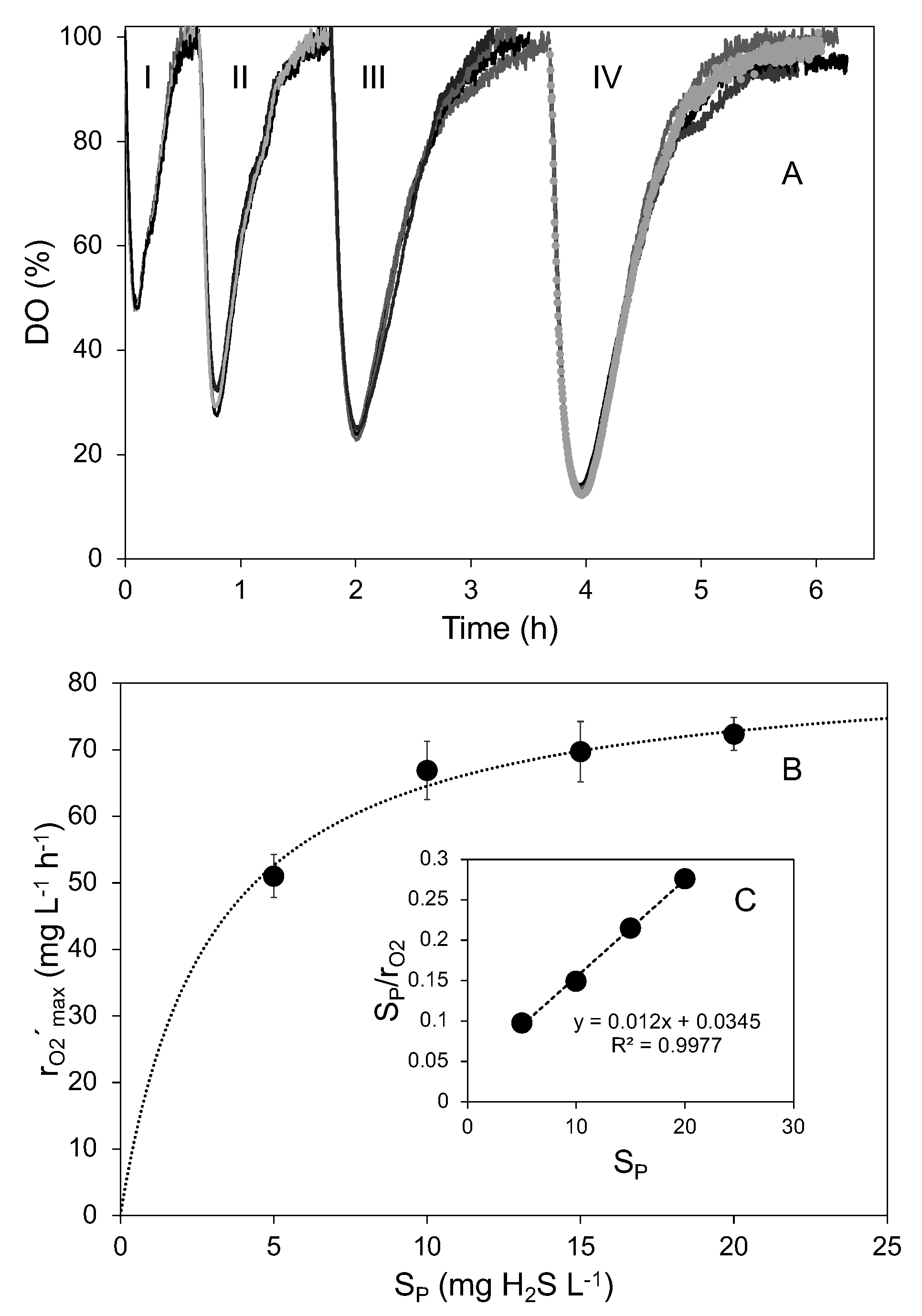 |
|
During the optimization of environmental biotechnology processes, it is important to count on proper and reliable information about the kinetic and stoichiometric parameters of the microorganisms. In this work, the biological sulfide oxidation process was assessed under two novel dynamic pulse respirometric approaches: in situ pulse respirometry conducted in airlift bioreactor and ex situ pulse respirometry carried out in microreactors (microrespirometry) with samples taken from the airlift bioreactor. The process was characterized in terms of the growth yield, substrate oxidation yield, maximum oxygen uptake rate, affinity constant, and mass transfer coefficient. The in situ pulse respirometry showed to be a reproducible technique that allowed the determination of the kinetic and stoichiometric parameters besides the detection of mass transfer limitations in the airlift bioreactor, however its use in biological sulfide oxidation is limited to a few experiments and experimental conditions with significant time investment. On the other hand, the ex situ pulse microrespirometry allowed the acquisition of a higher amount of information under a broader range of sulfide concentrations (from 5 to 60 mg H2S L-1) and experimental conditions such as different pH values. The results obtained showed that the ex situ microrespirometry technique would be preferable over in situ pulse respirometry for the proper and reliable characterization of the sulfide oxidation process.
Keywords: pulse microrespirometry, sulfide oxidation, airlift bioreactor, microreactor, inhibition models.
|
|
 |

